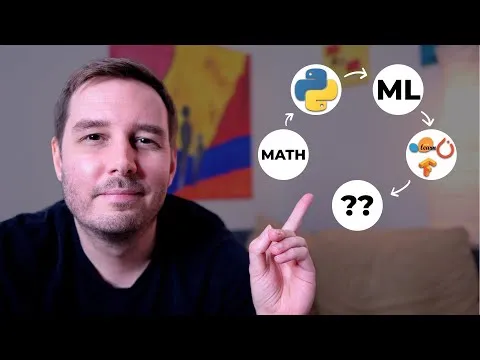
Unsupervised Machine Learning Course 
This course provides an introduction to unsupervised machine learning, covering a variety of techniques to create autonomous intelligence. Led by experts, students can learn the fundamentals of unsupervised learning with Udacity. ▼
ADVERTISEMENT
Course Feature
![]() Cost:
Cost:
Paid
![]() Provider:
Provider:
Udacity
![]() Certificate:
Certificate:
No Information
![]() Language:
Language:
English
Course Overview
❗The content presented here is sourced directly from Udacity platform. For comprehensive course details, including enrollment information, simply click on the 'Go to class' link on our website.
Updated in [March 06th, 2023]
This Unsupervised Machine Learning Course provides an introduction to the fundamentals of data clustering and how to use the K-means algorithm to cluster data. Participants will learn about Single Linkage Clustering and DBSCAN, a clustering method that captures the insight that clusters are dense groups of points. Gaussian Mixture Models are used to cluster data, and Expectation Maximization is used to optimise Gaussian Mixture Models. Additionally, Principal Component Analysis and Independent Component Analysis are used to reduce the dimensionality of the data. Participants will discover a wide range of techniques such as hierarchical and density-based clustering, gaussian mixture models, cluster validation, principal component analysis (PCA), and independent component analysis (ICA).
[Applications]
After completing this course, students should be able to apply the concepts and techniques learned to real-world problems. They should be able to use the K-means algorithm to cluster data, use Single Linkage Clustering and DBSCAN to cluster data, use Gaussian Mixture Models to cluster data, and use Expectation Maximization to optimize Gaussian Mixture Models. Additionally, they should be able to use Principal Component Analysis and Independent Component Analysis to reduce the dimensionality of the data. Finally, they should be able to use hierarchical and density-based clustering, cluster validation, and other techniques to analyze data.
[Career Paths]
1. Data Scientist: Data Scientists use unsupervised machine learning techniques to analyze large datasets and uncover patterns and insights. They use clustering algorithms to group data points into meaningful clusters, and use PCA and ICA to reduce the dimensionality of the data. Data Scientists also use Gaussian Mixture Models to identify clusters in data and Expectation Maximization to optimize the models. Data Scientists are in high demand and the demand is expected to continue to grow as more organizations rely on data-driven decision making.
2. Machine Learning Engineer: Machine Learning Engineers use unsupervised machine learning techniques to develop and deploy machine learning models. They use clustering algorithms to group data points into meaningful clusters, and use PCA and ICA to reduce the dimensionality of the data. They also use Gaussian Mixture Models to identify clusters in data and Expectation Maximization to optimize the models. Machine Learning Engineers are in high demand and the demand is expected to continue to grow as more organizations rely on machine learning models for decision making.
3. Business Intelligence Analyst: Business Intelligence Analysts use unsupervised machine learning techniques to analyze large datasets and uncover patterns and insights. They use clustering algorithms to group data points into meaningful clusters, and use PCA and ICA to reduce the dimensionality of the data. Business Intelligence Analysts also use Gaussian Mixture Models to identify clusters in data and Expectation Maximization to optimize the models. Business Intelligence Analysts are in high demand and the demand is expected to continue to grow as more organizations rely on data-driven decision making.
4. Research Scientist: Research Scientists use unsupervised machine learning techniques to develop and deploy machine learning models. They use clustering algorithms to group data points into meaningful clusters, and use PCA and ICA to reduce the dimensionality of the data. They also use Gaussian Mixture Models to identify clusters in data and Expectation Maximization to optimize the models. Research Scientists are in high demand and the demand is expected to continue to grow as more organizations rely on machine learning models for decision making.
[Education Paths]
1. Bachelor's Degree in Computer Science: A Bachelor's Degree in Computer Science is a great way to gain a comprehensive understanding of the fundamentals of computer science, including unsupervised machine learning. This degree will provide students with the knowledge and skills necessary to develop and implement machine learning algorithms. Additionally, students will learn about the latest trends in the field, such as deep learning and artificial intelligence.
2. Master's Degree in Artificial Intelligence: A Master's Degree in Artificial Intelligence is a great way to gain a deeper understanding of unsupervised machine learning. This degree will provide students with the knowledge and skills necessary to develop and implement advanced machine learning algorithms. Additionally, students will learn about the latest trends in the field, such as natural language processing and reinforcement learning.
3. Doctoral Degree in Data Science: A Doctoral Degree in Data Science is a great way to gain a comprehensive understanding of the fundamentals of data science, including unsupervised machine learning. This degree will provide students with the knowledge and skills necessary to develop and implement advanced machine learning algorithms. Additionally, students will learn about the latest trends in the field, such as big data analytics and predictive analytics.
4. Certificate in Machine Learning: A Certificate in Machine Learning is a great way to gain a comprehensive understanding of the fundamentals of machine learning, including unsupervised machine learning. This certificate will provide students with the knowledge and skills necessary to develop and implement machine learning algorithms. Additionally, students will learn about the latest trends in the field, such as deep learning and artificial intelligence.
Course Syllabus
Clustering
Hierarchical and Density-Based Clustering
Gaussian Mixture Models
Dimensionality Reduction
Course Provider

Provider Udacity's Stats at AZClass
The Unsupervised Machine Learning Course is an introduction to unsupervised machine learning, covering various techniques for creating autonomous intelligence. Led by experts, students can learn the fundamentals of unsupervised learning through Udacity. Learners can learn the basic principles of data clustering and how to use K-means algorithm to cluster data. They can also learn single-linkage clustering and DBSCAN, a clustering method that provides insight into clusters being dense groups of points. Learners can learn how to cluster data using Gaussian mixture models and how to optimize Gaussian mixture models using expectation maximization.
Discussion and Reviews
0.0 (Based on 0 reviews)
Explore Similar Online Courses

Python for Beginners - Basics to Advanced

Passive Income Masterclass

Python for Informatics: Exploring Information

Social Network Analysis

Introduction to Systematic Review and Meta-Analysis

The Analytics Edge

DCO042 - Python For Informatics

Causal Diagrams: Draw Your Assumptions Before Your Conclusions

Whole genome sequencing of bacterial genomes - tools and applications

How I would learn Machine Learning (if I could start over)

Learn Data Science and Machine Learning on Microsoft Azure


Start your review of Unsupervised Machine Learning Course